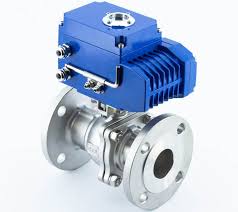
Efficiency Unleashed: Electric Actuated Ball Valves
Ball valves are commonplace components in plumbing, gas, and oil industries. They are invented in the 1950s as an alternative to globe valves and gate valves, which were complicated to operate and required constant maintenance. A ball valve is a quarter-turn valve with a spherical closure unit and aligned ports that permit the fluid or gas to flow freely. Ball valves are easy to use, provide reliable leakproofness, and operate efficiently even in extreme temperatures and pressures.
In this blog post, we will explore the benefits of using ball valves in different industries. We will delve into how they compare to other types of valves and the various types available on the market. We will also explain why ball valves are a go-to choice for many engineers and technicians.
Advantages of Ball Valves
Electric actuated ball valve have several attributes that make them the preferred choice over globe valves and gate valves. Ball valves are easy to operate and maintain, as they are simple in design and have few moving parts. They are a reliable choice, boasting excellent sealing capacity that makes them leakproof even under extreme temperatures and pressures. Ball valves are also highly resistant to corrosion, which extends their lifespan and durability.
How Ball Valves Compare to Other Valves
The three most common types of valves are ball, globe, and gate valves. While each valve type has unique features, ball valves stand out for several reasons. Ball valves are less expensive than globe valves, have a lower pressure drop than globe valves, and have a higher flow capacity than gate valves. By comparison, gate and globe valves tend to be bulkier, heavier, and require more maintenance. Globe valves also require a higher level of skill to operate and tend to wear out faster.
Types of Ball Valves
There are different types of ball valves designed for different applications, including full port, reduced port, and V-Port ball valves. Full port valves have an opening equal to the pipe’s inside diameter, allowing full flow of fluid or gas through the valve. Reduced port valves have a smaller opening and hence reduce the flow rate; however, they are cheaper than full port valves. V-Port valves comprise a v-shaped ball that offers precise flow control and throttle capacity, making them ideal for process control applications.
Why Engineers and Technicians Prefer Ball Valves
Engineers and technicians prefer ball valves for several reasons. Firstly, ball valves are reliable and require less maintenance than other valves, resulting in reduced downtime and cost savings. Secondly, ball valves offer high chemical resistance, making them ideal for handling corrosive fluids. Thirdly, ball valves are versatile and can operate efficiently in high-temperature and high-pressure environments. Finally, ball valves provide excellent flow control, enabling precise regulation of the fluid or gas flow.
Key Considerations When Choosing Ball Valves
When choosing ball valves, it is essential to consider factors such as application, flow rate, temperature, and pressure. Full port valves are ideal for applications that require maximum flow, while reduced port valves are suitable for applications that require lower flow rates. The choice of material also matters, with stainless steel, brass, and bronze being common choices. Consider the expected temperature and pressure conditions of the application and choose an appropriately rated ball valve to avoid leaks and failures.
In short:
Ball valves are a reliable, cost-effective, and efficient solution for flow control in various applications. They are easy to operate and maintain, have few moving parts, and can withstand harsh conditions. Ball valves are superior to other types of valves in terms of flow rate, pressure drop, and cost-effectiveness. When selecting ball valves, it is crucial to consider factors such as application requirements, materials, and environmental conditions. Choosing the right ball valve ensures operational efficiency, reduced downtime, and cost savings.



